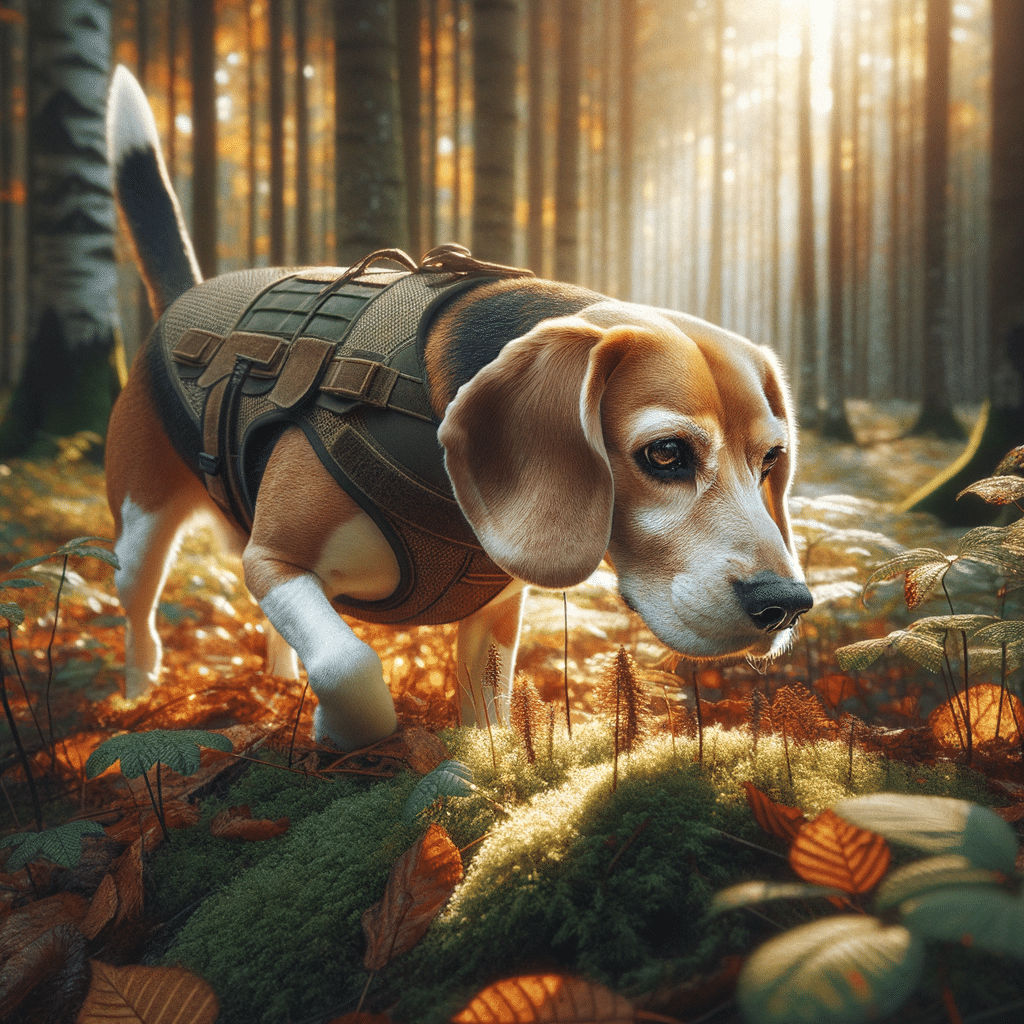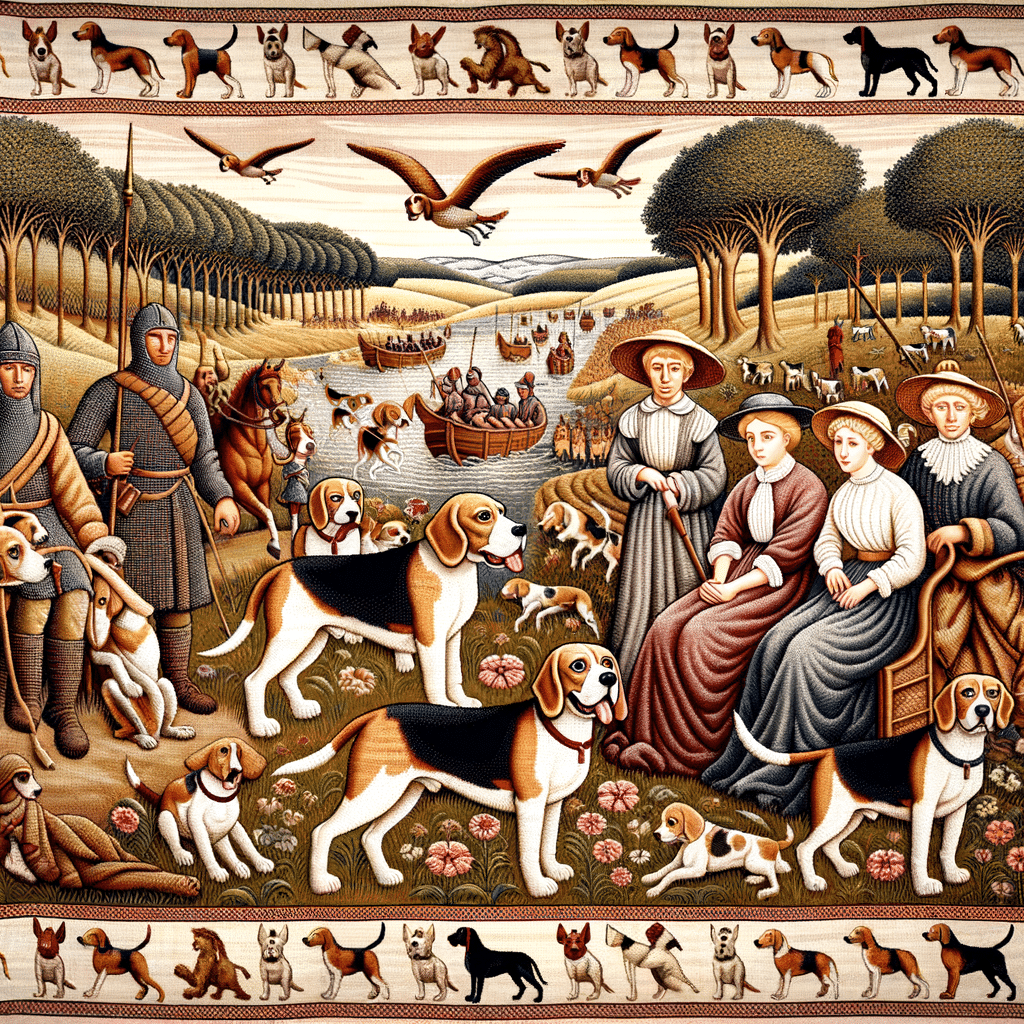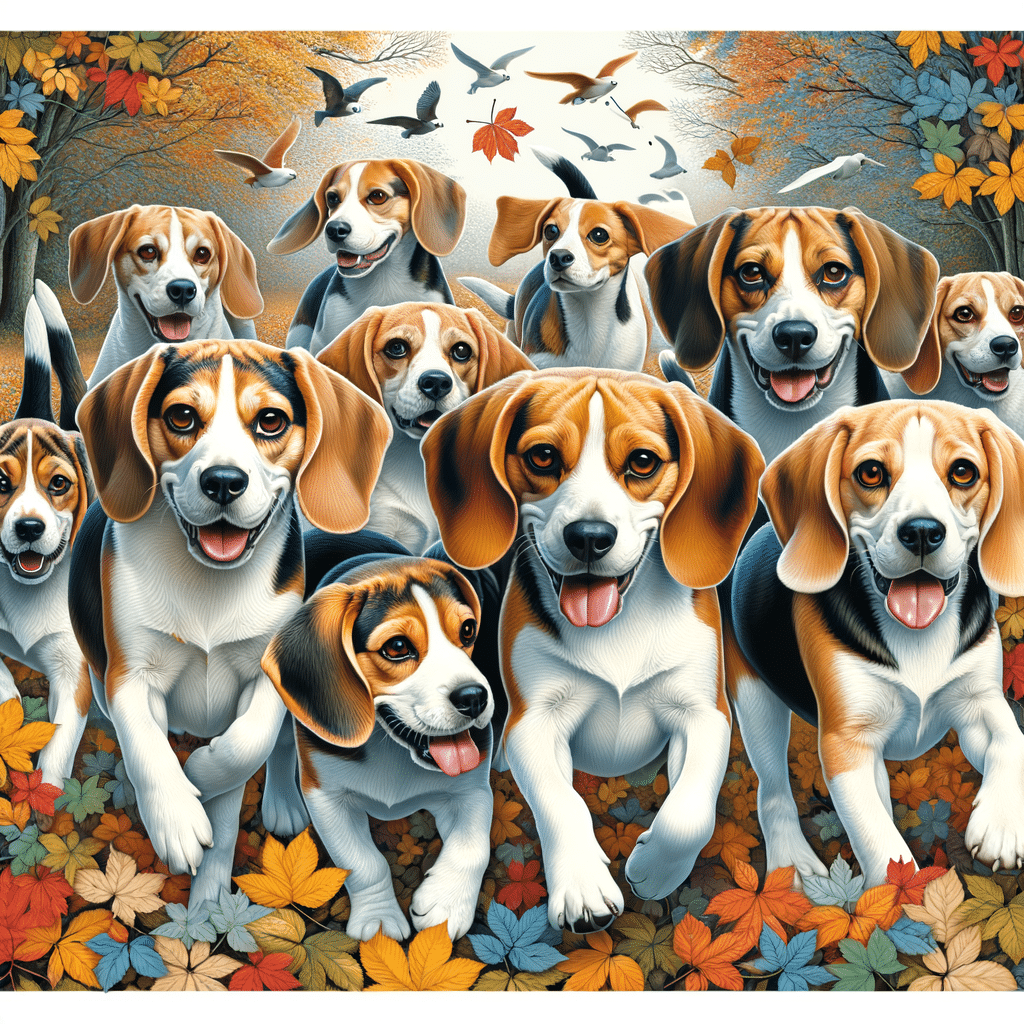When considering adding a furry friend to the family, choosing the right dog breed is crucial. Beagles and Yorkshire terriers, affectionately known as “Yorkies,” are two popular breeds, each with unique traits and histories that can cause potential dog owners to ask themselves, “Beagle versus Yorkie,” when trying to find their perfect companion.
In This Article
Beagles are known for their friendly disposition, sturdy build, and excellent scent-tracking abilities, making them long-standing favorites for active outdoor companionship and relaxed family life. Originating from England, they have a rich background as a hunting dog breed and are often seen in various roles due to their adaptable and social nature.
On the other hand, the diminutive Yorkshire terrier holds a towering personality in a compact frame, marked by its luxurious coat and tenacious spirit. Hailing from the county of Yorkshire in Great Britain, Yorkies were originally bred to control vermin populations but quickly became beloved pets that thrived in the companionship of their owners. Their small size makes them particularly suited for apartment living and urban environments, where they can be close to their human counterparts.
Highlights
- Beagles and Yorkies are suitable for different living environments and lifestyles.
- Each breed requires specific care, training, and socialization to thrive.
- Selecting between a beagle and a Yorkshire terrier involves personal preferences and lifestyle alignment.
Breed Characteristics and History
In comparing the beagle and the Yorkshire terrier, it is essential to consider their backgrounds, physical characteristics, standing in breed rankings, personalities, and health profiles. These factors are crucial in understanding the distinct nature of each breed.
Origins and Breed Type
- Beagle: Dating back to England in Roman times, beagles are scent hounds initially bred for hunting small game due to their powerful sense of smell. They are often used for hunting hares, earning them the name “beagle,” which is derived from the French word “be’gueule,” meaning "gape throat," which referenced their baying during the hunt.
- Yorkshire terrier: Emerging in the 19th century in Northern England during the Industrial Revolution, Yorkshire terriers were used as ratters in mills. They hail from a mixture of terrier breeds brought from Scotland to Yorkshire. Yorkies are cherished for their small size and tenacious personalities, rising quickly as a favored companion dog.
Physical Description
Beagle
- Size: Medium
- Height: 13-16 inches
- Weight: 20-30 pounds
- Coat: It is short, dense, and weather-resistant, and it comes in a variety of colors, including tricolor, red and white, and lemon.
Yorkshire Terrier
- Size: Toy
- Height: 7-8 inches
- Weight: Under 7 pounds
- Coat: Long, silky, and fine; traditionally blue and tan.
Breed Popularity
Beagles consistently rank among the top 10 most popular breeds in the American Kennel Club (AKC) rankings. They are revered for their friendly disposition and suitability for families.
Yorkies are also often in the AKC Top 10. Their small size makes them popular for apartment living and companionship.
Personality Traits
Beagles are known for being friendly, curious, and merry. Their hunting heritage instills a sense of adventure, stubbornness, and robust tracking instincts.
Yorkshire Terriers are recognized for their intelligence, courage, and independence. Despite their small stature, they have a large and vivacious personality, often showing a caring and affectionate temperament towards their owners.
Health and Lifespan
Beagles live between 10 and 15 years. Common health issues include epilepsy, hip dysplasia, hypothyroidism, and Beagle Dwarfism.
Yorkshire Terriers live generally between 11 and 15 years. This breed is more prevalent in health problems such as hypoglycemia, patellar luxation, and eye conditions like distichiasis and progressive retinal atrophy.
Care Requirements
Proper care of beagles and Yorkshire terriers ensures their health and happiness. The following subsections cover grooming, exercise, and diet, which are crucial to their well-being.
Grooming and Maintenance
Beagles and Yorkshire terriers have different grooming needs due to their coat types.
Beagle
- Grooming: Requires regular brushing to minimize shedding and maintain coat health.
- Maintenance: Low maintenance; bathing is needed only occasionally unless they get particularly dirty from outdoor activity.
Yorkshire Terrier
- Grooming: High maintenance with daily brushing to prevent tangles in their fine, silky long coat.
- Shedding: Minimal; their hair resembles human hair and doesn’t shed as much as other breeds.
Exercise and Energy Levels
Both breeds have an inherent playfulness and energy that necessitate daily exercise to maintain their health and prevent obesity.
Beagle
- Energy level: High, reflective of their hunting dog lineage.
- Activity needs: Daily walks, playtime, and scent games to cater to their tracking instincts.
Yorkshire Terrier
- Energy level: Moderate to low, often sufficient with shorter daily walks or play sessions.
- Playfulness: Highly playful, they enjoy engaging in games and activities that provide mental stimulation.
Diet and Nutrition
A balanced diet tailored to their size, age, and energy level is essential for preventing obesity and maintaining overall health.
Beagle
- Food consumption: Prone to obesity, so a beagle parent must monitor their food intake and avoid overfeeding.
- Health considerations: Be alert to food allergies and adjust their diet accordingly.
Yorkshire Terrier
- Diet: A diet that supports coat health and energy needs with high-quality ingredients is required.
- Portion control: Due to their small size, they need smaller, more frequent meals to sustain their energy levels without leading to weight gain.
Training and Socialization
This section explores the distinct aspects of training and socialization for beagles and Yorkshire terriers, discussing their intelligence, behavioral traits, and how they fit into various family settings.
Trainability and Intelligence
Beagles are known for their intelligence and can be trained effectively with patience and positive reinforcement. They typically have a moderate energy level but can be distracted by their high prey drive and impulse to wander, making training a bit challenging.
On the other hand, Yorkshire terriers also demonstrate high intelligence levels, making them quite trainable. Their size and energy level make them good candidates for apartment living, although they can be stubborn.
Behavioral Traits
Yorkshire terriers exhibit strong watchdog abilities due to their loyal and alert nature, often barking at unfamiliar sounds. Conversely, beagles are friendly and social dogs with a propensity for vocalization but are less inclined toward guarding behavior. Both breeds need social interaction and demonstrate playful and affectionate behavior.
Suitability for Families
When it comes to being family dogs, beagles are highly sociable and generally kid-friendly, thriving best when they’re part of household activities. Yorkshire terriers can be affectionate with family members, but their small size sometimes requires supervision around young children. Both breeds have considerable social needs and relish attention from their human counterparts.
Adaptability
Beagles are generally adaptable and can live happily in houses with yards and larger apartments, although they need ample exercise. With their small stature, Yorkshire terriers adapt well to apartment living and have less of a need for cold weather considerations due to their indoor preferences. Both dogs require mental stimulation to prevent boredom-related undesirable behaviors.
Interaction with Other Pets
Beagles, originally bred for pack hunting, usually exhibit pet-friendly behavior and often do well with other dogs and even cats if properly socialized in youth. In contrast, Yorkshire terriers might require a careful introduction to other pets due to their prey drive and small-dog syndrome. The social needs of both breeds make them well-suited as companion dogs for other animals with the right training and introductions.
Choosing Between Beagle and Yorkshire Terrier
When selecting a pet, it’s crucial to consider how a beagle’s or Yorkshire terrier’s characteristics align with your lifestyle. Each breed offers distinct temperaments, care requirements, and suitability to various living environments.
Deciding on the Right Breed for You
Deciding between a beagle and a Yorkshire terrier requires understanding each breed’s distinct personality. Beagles are known as friendly and curious dogs, often proving good with children. They are medium-sized, with an energy level that demands regular exercise. In contrast, as a small dog, Yorkshire terriers are confident and suited for smaller living spaces. They are less tolerant of rough play, making them a better match for households without young children.
Considerations for Potential Owners
A responsible pet owner should consider maintenance and adaptability. Yorkshire terriers, with their long, silky coats, require more frequent grooming to prevent tangles. They are considered hypoallergenic, making them a preferable choice for those with allergies. Beagles, with their short coats, require less grooming but shed more.
Both breeds have specific health problems to watch for, so regular vet checkups are important. Regarding adaptability, Yorkshire terriers can be content in apartments, whereas beagles may thrive best in homes with more space to roam.
Price and Availability
Both breeds are popular, but Yorkshire terriers are often more expensive due to grooming costs and potentially higher demand for small, hypoallergenic dogs. The price for beagles may vary but is generally lower. However, prices fluctuate based on location, breeder reputation, and bloodlines. Availability is also subject to change, and it’s advised to check with local shelters and reputable breeders.
Frequently Asked Questions
The following FAQs address common inquiries regarding the differences between beagle and Yorkshire terrier (Yorkie) breeds, ranging from temperament to intelligence.
What are the key differences in temperament between beagle and Yorkie breeds?
The beagle is known for its friendly and sociable nature, making it particularly suitable for families with children. In contrast, Yorkies, while also friendly, tend to be less tolerant and more suited to a household with older or no children.
How do beagle and Yorkie sizes compare?
Beagles are generally larger than Yorkies, with a more robust build. A Yorkie may grow up to 18 cm shorter and weigh approximately 17 pounds less than a beagle.
Which breed tends to have better overall health, beagles or Yorkies?
Both breeds have their health challenges, but beagles are commonly considered to have fewer genetic health problems than Yorkies, who are prone to certain breed-specific issues.
Is the beagle breed known for being exceptionally friendly?
Beagles are known for their exceptional friendliness. They possess a jovial and affectionate demeanor that is well-suited to families and children.
Are Yorkies well-suited to living in an apartment and being house dogs?
Yorkies are well-suited to apartment living due to their small size and make good house dogs, though they require high maintenance and have high-energy needs.
How do Yorkies rank in intelligence compared to other dog breeds?
Yorkies are considered intelligent and quick learners, making them highly trainable, albeit they may sometimes display independent stubbornness.






